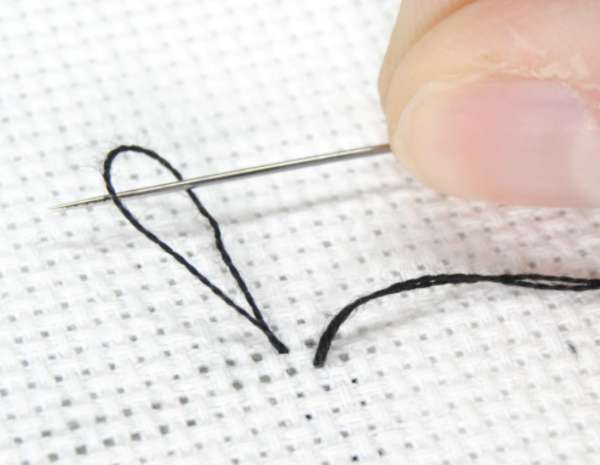
I will fully and openly admit to being the sort of cross stitcher who starts her threads with a knot. I don’t usually care what the back of my work looks like, and I don’t need to it be perfectly smooth, so I’ve never had a problem doing it that way.
I always tie my knots like I show in this post on tying knots for hand sewing, which makes a large knot but it’s sturdy and it won’t pull through the hole in the cross stitch fabric.
I know there are other ways, and potentially better ways, to go about starting a cross stitch project or working in a new piece of floss. If you’re wondering what they might be, check out this very comprehensive post from Sirious Stitches, which includes seven different options for securing your thread.
From techniques that bury the thread end behind the stitches as you work to various ways to use knots on the back to a couple of versions of loop stitches and one process that definitely looks like way too much effort, this is a great overview of your options if you’ve never really thought about how you start stitching or if there’s a “better” way.
Note here that better is totally subjective, and if you don’t mind knots on the back of your work and that’s the way you’re comfortable working, that’s probably the best method for you.
If on the other hand you need the back of your work to be pretty, because, for instance, you’re entering it in a competition of some sort, or the back will be visible for some reason, by all means check out another way to start your stitching that’s a little less intrusive.
Have you ever given any thought to how you anchor your stitches when you start a new thread of cross stitch? Are you on team never knot, or do you always start with a knot? Let’s talk about it!
[Photo: Sirius Stitches]
How to Frame Cross Stitch with Lacing
 It’s not really that close to Halloween as I write this, but as crafters we’re always looking ahead and spooky season is one of my favorites. If it’s yours, too, or you just like things on the Gothic side, you should enjoy browsing and stitching projects from Ars Onirika on Etsy.
It’s not really that close to Halloween as I write this, but as crafters we’re always looking ahead and spooky season is one of my favorites. If it’s yours, too, or you just like things on the Gothic side, you should enjoy browsing and stitching projects from Ars Onirika on Etsy.